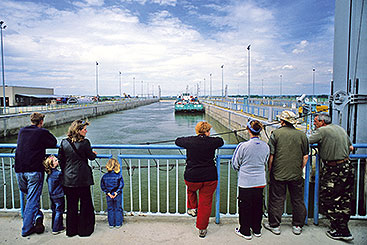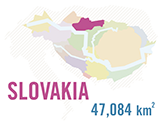Slovakia - Bringing basin-wide experience together

Slovakia
Bringing basin-wide experience together
The Danube River Protection Convention creates space for useful cooperation among nations where collaboration can lead to innovative ideas to manage water management issues.

Credit: ICPDR/Mello

The Danube is a huge river with a giant catchment, and thus cooperation among nations in the basin has long been a necessity. However, there is a clear difference between finding partial solutions to problems and conceptual cooperation with a clearly defined goal. Put simply, the sustainable and equitable use of water, land and natural resources in the Danube River Basin is an ambitious goal, but worth the effort.
Slovakia’s location and experiences in the Danube River Basin provide beneficial learning opportunities for other countries. In the south, the Danube, Morava and Tisza River Basin waters flow into the country, and all waters flow out of Slovakia to our neighbours. This gives us great caution, as we are aware that whatever we do – positive or negative – has consequences for our neighbours. Our principle is to cause no harm to others, and this basic tenet is firmly anchored in our interior legal acts and in bilateral and multilateral legal instruments such as the Danube River Protection Convention.
Slovakia experienced a disaster during the 1965 flood on the Danube River, which broke flood protection dykes in two places and flooded more than 940 km2. Lessons learned from the experience led to the radical reorganisation of river basin management in Slovakia. Since 1965, rivers have been managed according to the natural boundaries of catchments, independent of any administrative changes.
Bringing experience to the river basin.
In addition, the Slovak Republic has long
experience in water management planning
which is beneficial to all countries in the
region. As early as 1951, the government
of the former Czechoslovakia adopted the
State Water Management Plan, balancing
the interests of economic growth with the
need to protect water as a natural resource
and guarantee its sustainable use. In the
1970s, this plan was updated as the Guiding
Water Management Plan, which was
elaborated according to river sub-basins. The implementation of these plans led to
the unprecedented development of water
management in Slovakia from the 1950s to
the end of the 20th century.
Joining the Danube River Protection Convention and participating in the activities of the ICPDR has been extremely positive for Slovakia, because finding shared solutions to improving water management brings innovative ideas and dimensions on the widest scale. The participation of our experts in the activities of the ICPDR’s expert groups to exchange lessons, knowledge and experiences and to discuss new solutions has improved our work at home and our work towards our common goal: the protection and development of the Danube River Basin.
The 20th anniversary of the signing of the Danube River Protection Convention is an excellent occasion to offer our sincere thanks to the ICPDR Permanent Secretariat for the day-to-day hard work in achieving the goals of the region. The Convention creates space for useful cooperation among nations, and we hope that the activities of the ICPDR will continue to be applied to the sustainable development of the Danube River Basin – for the benefit of all people living here.





